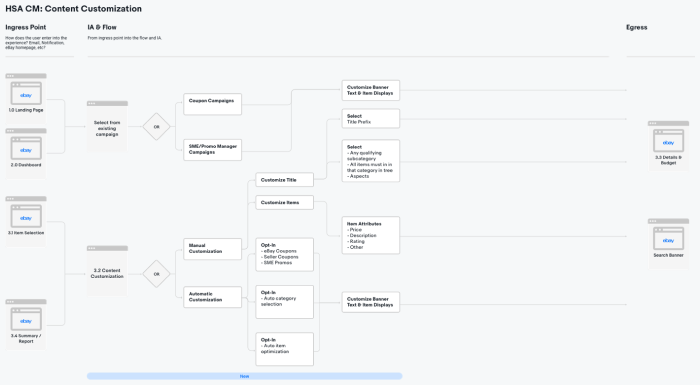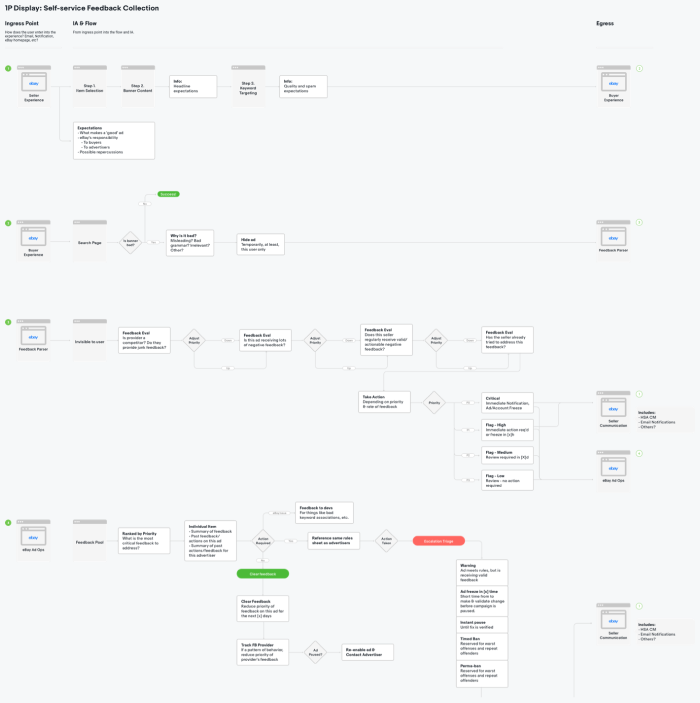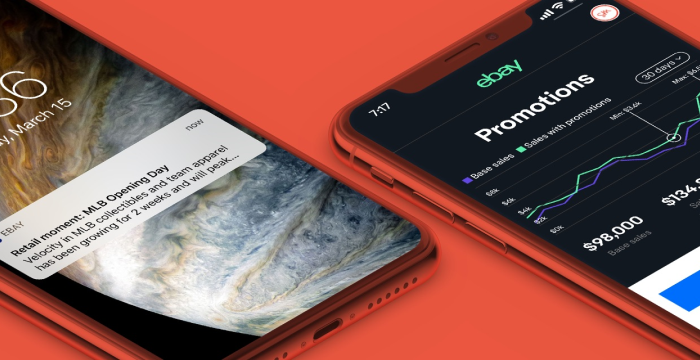Results
75%
Reduction in manage campaign creation time
3x
Expanded distribution of 1P Display ads
200
User self-service tool beta launched
Overview
First Party Ads are products where eBay sellers (or brands with sellers on eBay) pay to promote themselves and their inventory. These ads keep shoppers on eBay while providing sellers and brands levers they can pull to grow their business. At the time this project began, advertisers were forced to create static ads according to a template, while eBay managers would create campaigns via spreadsheet upload. This high-effort system limited our distribution and ability to scale.
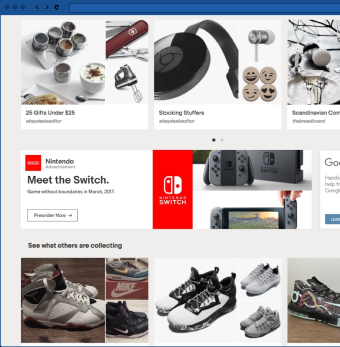
The Work
01.
Optimize the Managed Product
Transition away from static ads
We chose to focus on two issues. We first began transitioning ad units to rely on individual assets - text strings and images - instead of precomposed banners. This reduced our time spent creating, reviewing, and approving ads from hours a day to minutes, while allowing us to run ads in more locations.
Improve the campaign creation workflow and tool
We then replaced the existing spreadsheet-based management workflow with a web-based UI that allowed our ad operations team to create, preview, and manage campaigns for advertisers – allowing us to onboard more advertisers with the same resources.
After interviewing our advertising team, we focused on three common scenarios:
- Creating and updating individual campaigns
- Reviewing campaigns to validate the setup and creative assets
- Managing accounts and access for employees who perform scenarios 1 & 2
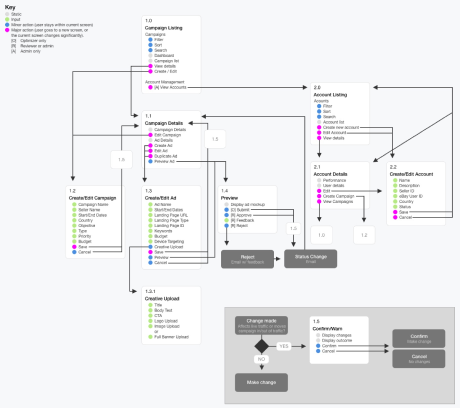
We quickly came to the realization that we only needed two roles: regular users, who create and optimize campaigns, and admins, who actually manage the user accounts and regulate access. With this in mind, we specifically began creating and testing workflows with our users, designed to reduce repetitive work and the opportunity for errors.
The final tool allowed our users to quickly and easily set up mutiple campaigns for each advertiser, as well multiple ads for each campaign – each with its own creative assets, placement, targeting and budget.
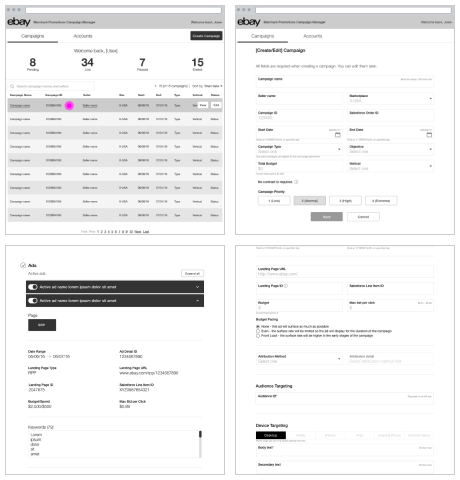
02.
Self-Service Transition
Although this was an improvement, the reliance on an internal product team to manage ads would continue to exclude the largest cohort of eBay sellers: small & medium businesses. The advertising team wanted to launch a self-service product beta that would remove this bottleneck by mid-2018 to validate the basic product vision.
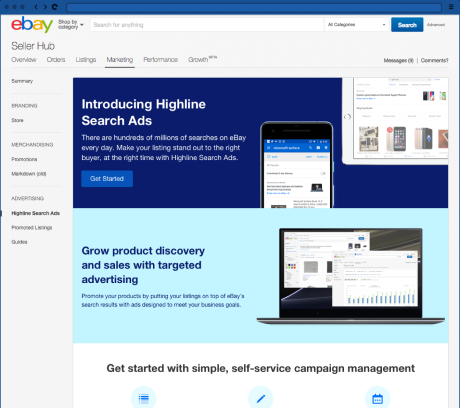
03.
Limitations and Insights
Our end goal was to design a tool that didn't require tutorials or onboarding – speaking in plain language and simplifying business decisions.
Limitations
First, we evaluated if we could incorporate this into the existing seller toolset (we couldn't, due to technical scope), reviewed existing research about our sellers' business processes and use of our existing tools. I also sent surveys to our sellers asking about expectations and needs/wants for tools and advertising in general.
Key takeaways
- Sellers know their inventory, and consider themselves experts in that area
- Marketing is their smallest, last task: Ease of use and speed are more important than full customization
- User needs aligned with our value proposition of self-service with heavy automation
Insights
User testing provided immediate, actionable feedback. For example, we found the existing method of category selection was too complicated. Budgeting was another pain point – put too early in the flow or requiring too much math tended to stall users. Although it wouldn't be a part of the beta, we also wanted to understand reporting needs. We found our users didn't care about their performance compared to similar sellers. Instead, they were focused on sales growth and ensuring they were optimizing their use of advertising.
04.
Beta Launch
We opened up access to 200 users and onboarded them into the product and the three-step creation process. From there, we put sellers directly into the tool to create their first ad.
Key metrics for our ad products: click-through rate, ad sales, and return on ad-spend.
05.
Outcomes
Based on tracking data and seller anecdotes, the ads worked for some sellers, but not most. The ads that worked best promoted recognizable brands with real discounts - highlighting the need integrate with our other seller promotion tools (bundling, discount campaigns, etc.) to get better content. For dissatisfied users, patience with the lack of system visibility faded quickly. They demanded improvements and transparency in keyword targeting, as well as some form of manual control. All users wanted to create campaigns with more items, which required UX and UI optimizations within the tool.
Additionally, an earlier decision to allow for free-form text without a review flow created quality and trust issues. Too many sellers created poor-quality, rule-breaking ad, leading to the removal of free-form text. For the next version, we would be forced to rethink the ad content workflow.
This was summarized in a retrospective, which marked the end of my involvement with the project - I transitioned to a management role shortly after.
